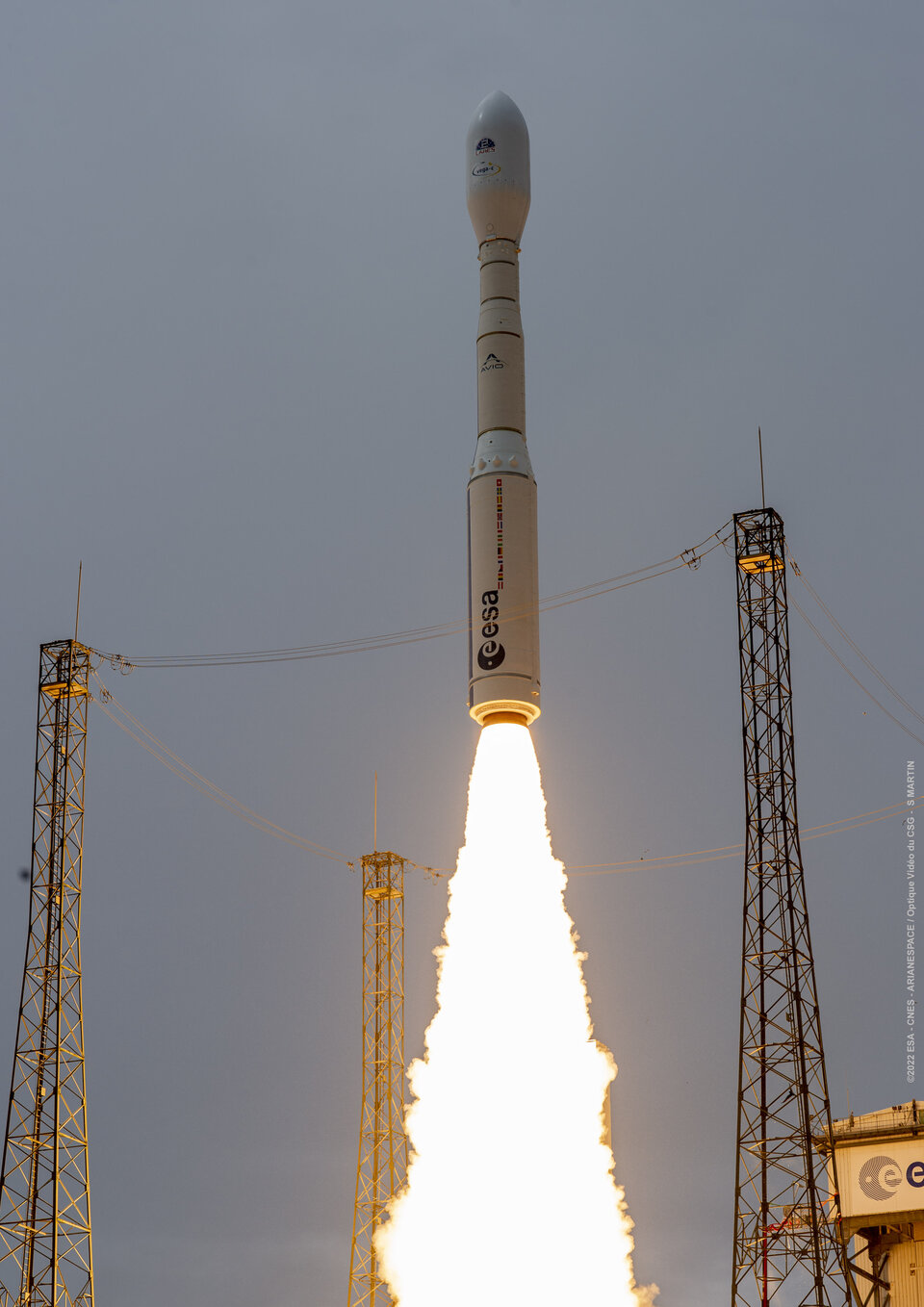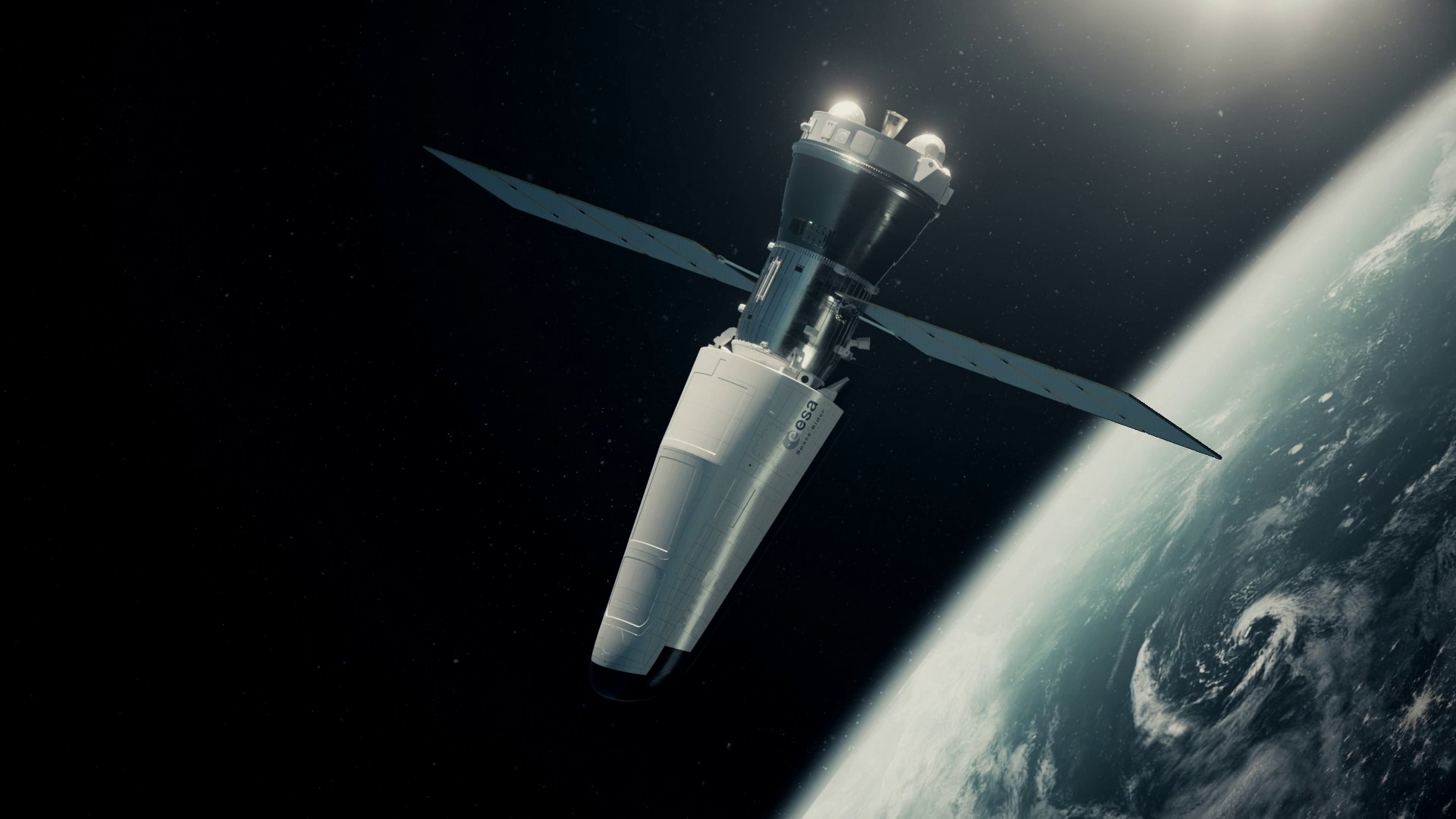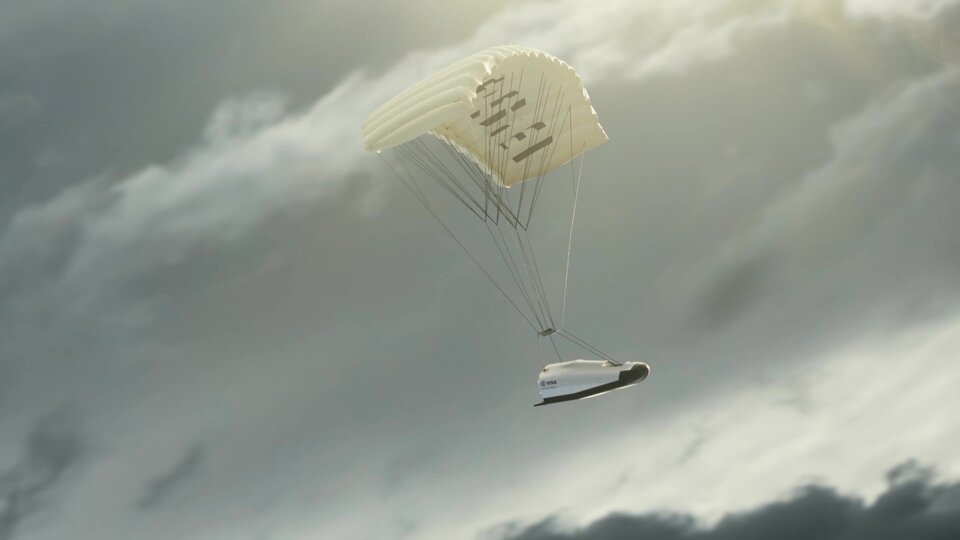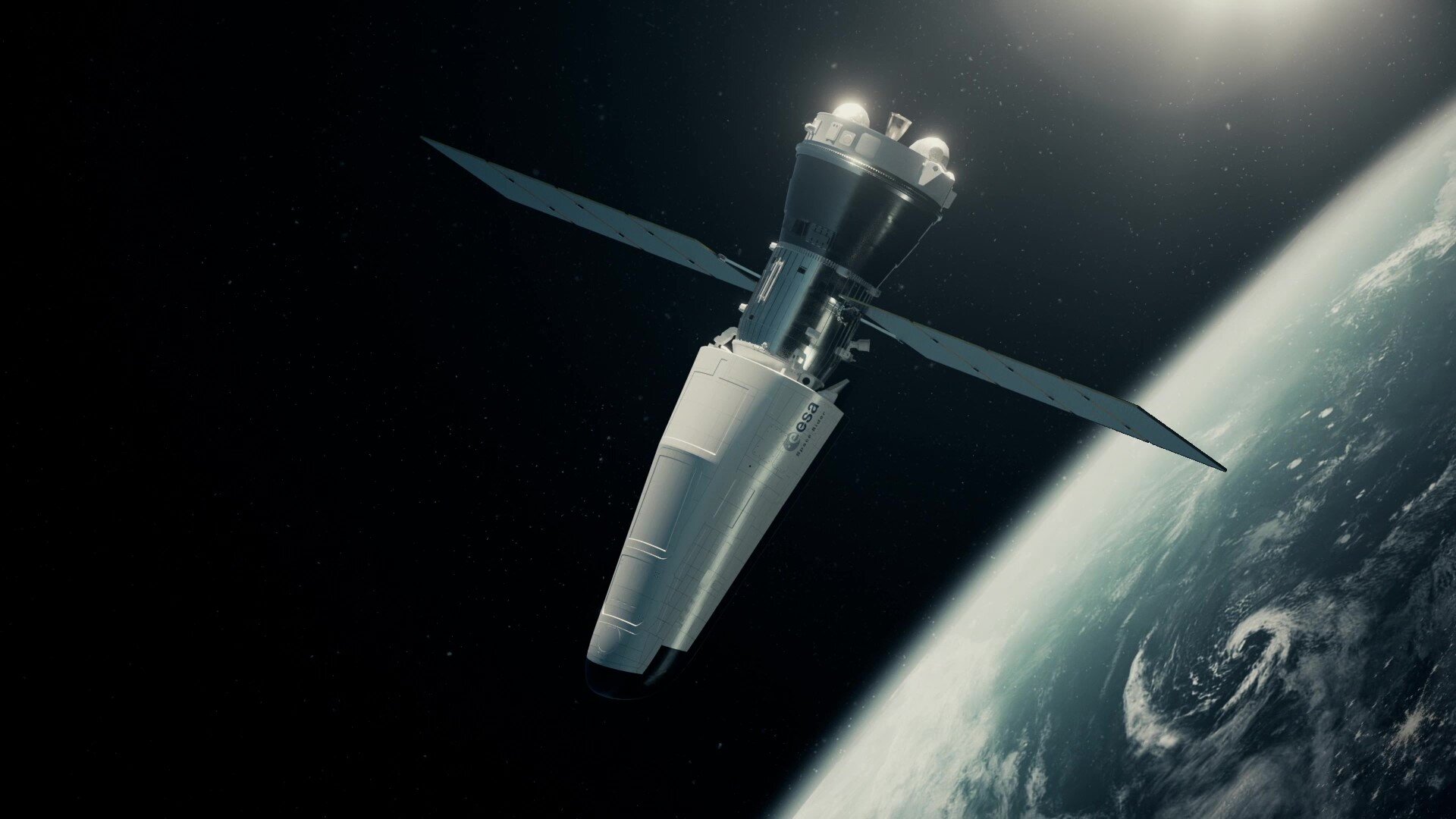Space Rider enters phase D for drop tests
In brief
Last month ESA’s reusable space vehicle got a thumbs up to move into phase D of development: building and testing.
In-depth

Space Rider is an uncrewed robotic laboratory about the size of two minivans that can stay in orbit for two months. It comes in two parts, the orbital module that supplies everything the spacecraft needs to fly around our planet and a reentry module that allows Space Rider and its experiments to return to Earth.
The orbital module is an extension to the Vega-C launcher fourth stage that will guarantee power supply, orbital manoeuvring, and attitude control. The reentry module is the part of the vehicle that houses experiments and provides protection from the intensive heat that occurs entering Earth's atmosphere as well as the landing system.
The review last month gives the final go-ahead for Space Rider programme to build the elements of the spacecraft as well as start intensive tests to qualify how the spacecraft will fly, return to Earth, and land. Qualification models of several units and systems have been already delivered and upon successful test campaigns, flight models will be authorised for manufacturing.


Access the video
Every way the wind blows

Space Rider uses a novel technique for braking from its orbital speeds of 28 800 km/h to a soft landing on a runway to be built at Europe’s spaceport in Kourou, French Guiana. Coming out of the supersonic speeds, at about 5 km from the landing strip Space Rider will release a parafoil and steer itself automatically to a soft landing.
Tests on a smaller parafoil will start this month to prepare for a full-scale test later this year using a 70 m2 parafoil. The smaller tests will allow engineers to tweak the algorithms that will pilot the spacecraft using winches to pull and release the canopy – just like a human parapente pilot does.
Nobody controls the weather, and more tests are set for next year under the worst possible conditions. The system drop test will put all the elements together and see how the landing system, software and parafoil work together for a gentle touchdown regardless of wind.
The landing gear itself is also novel, Space Rider will feature a wheel at the front and two skids at the back, this design is better for the stability in case of crosswinds at landing and as the skids are flatter than wheels it allows more room inside Space Rider for the experiments.
“Moving to Phase D in development is a milestone for all spaceflight projects, and the Space Rider team is looking forward to putting our theory into practice on this unique project,” says Dante Galli, Space Rider programme manager.


